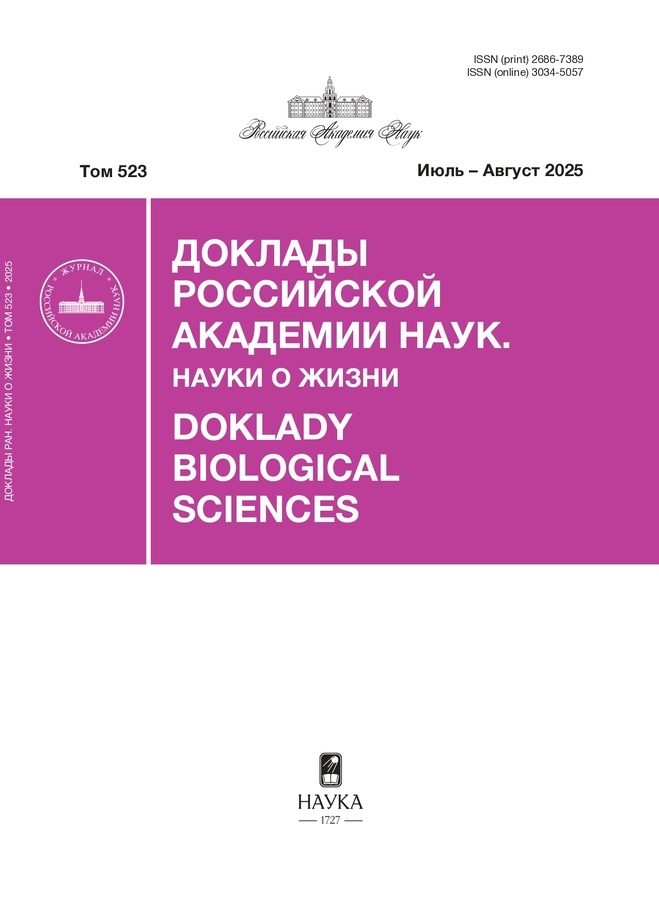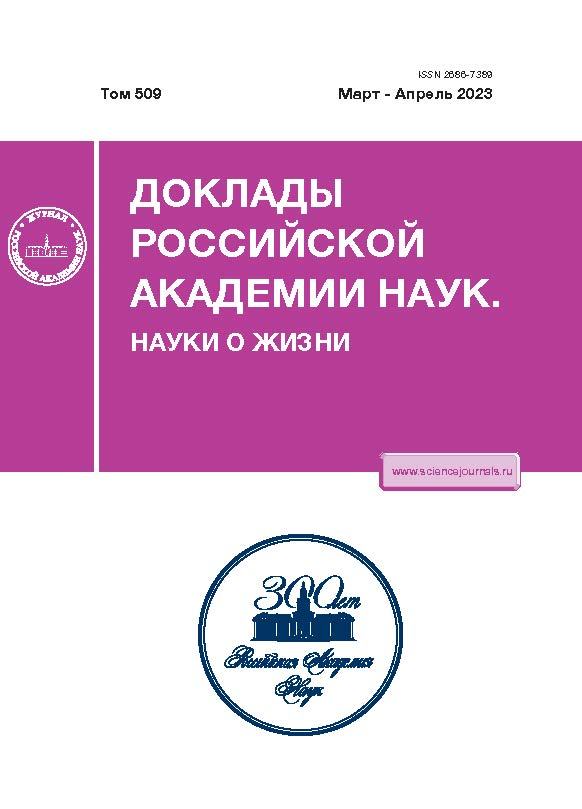STUDY OF THE IN VIVO FUNCTIONAL ROLE OF MUTATIONS IN THE BTB DOMAIN OF THE CP190 PROTEIN OF DROSOPHILA MELANOGASTER
- Authors: Fedotova A.A.1, Georgiev P.G.1, Bonchuk A.N.1
-
Affiliations:
- Institute of Gene Biology, Russian Academy of Sciences
- Issue: Vol 509, No 1 (2023)
- Pages: 177-180
- Section: Articles
- URL: https://rjpbr.com/2686-7389/article/view/651132
- DOI: https://doi.org/10.31857/S2686738922600868
- EDN: https://elibrary.ru/LZNLTA
- ID: 651132
Cite item
Abstract
The Drosophila transcription factor СР190 is one of the key proteins that determine the activity of housekeeping gene promoters and insulators. CP190 has an N-terminal BTB domain that allows for dimerization. Many of known Drosophila architectural proteins interact with the hydrophobic peptide-binding groove in the BTB domain, which is supposed to be one of the mechanisms for recruiting CP190 to regulatory elements. To study the role of the BTB domain in the interaction with architectural proteins, we obtained transgenic flies expressing CP190 variants with mutations in the peptide-binding groove, which disrupts their interaction with architectural proteins. As a result of the studies, it was found that mutations in the BTB domain do not affect binding of the CP190 protein to polytene chromosomes. Thus, our studies confirm the previously obtained data that CP190 is recruited to regulatory elements by several transcription factors interacting in addition to BTB with other CP190 domains.
About the authors
A. A. Fedotova
Institute of Gene Biology, Russian Academy of Sciences
Email: bonchuk_a@genebiology.ru
Russian Federation, Moscow
P. G. Georgiev
Institute of Gene Biology, Russian Academy of Sciences
Email: bonchuk_a@genebiology.ru
Russian Federation, Moscow
A. N. Bonchuk
Institute of Gene Biology, Russian Academy of Sciences
Author for correspondence.
Email: bonchuk_a@genebiology.ru
Russian Federation, Moscow
References
- Kyrchanova O., Georgiev P. // Int J Mol Sci. 2021. V. 22. № 2. P. 671.
- Pai C.Y., Lei E.P., Ghosh D., Corces V.G. // Mol. Cell. 2004. V. 16. P. 737–748.
- Cubenas-Potts C., Rowley M.J., Lyu X., et al. // Nucleic Acids Res. 2017. V. 45. № 4. P. 1714–1730.
- Bartkuhn M., Straub T., Herold M., et al. // EMBO J. 2009. V. 28. P. 877–888.
- Sabirov M., Kyrchanova O., Pokholkova G., et al. // Epigenetics Chromatin. 2021. V. 22. № 14 (1). P. 16.
- Plevock K.M., Galletta B.J., Slep K.C., Rusan N.M. // PLoS One. 2015. V. 10. e0144174.
- Bonchuk A., Denisov S., Georgiev P., Maksimenko O. // J Mol Biol. 2011. V. 23. № 412 (3). P. 423–36.
- Oliver D., Sheehan B., South H. et al. // BMC Cell Biol. 2010. V. 11. P. 101.
- Maksimenko O., Bartkuhn M., Stakhov V. et al. // Genome Res. 2015. V. 25. P. 89–99.
- Kyrchanova O., Klimenko N., Postika N., et al. // Biochim Biophys Acta Gene Regul Mech. 2021. V. 1864. № 10. 194733.
- Melnikova L., Kostyuchenko M., Molodina V., et al. // Chromosoma. 2018. V. 127. № 1. P. 59–71.
- Bag I., Chen S., Rosin L.F., et al. // Nat. Commun. 2021. V. 12. P. 4170.
- Sabirov M., Popovich A., Boyko K., et al. // Int J Mol Sci. 2021. V. 22. № 22. 12400.
- Ahmad K., Melnick A., Lax S., et al. // Mol. Cell. 2003. V. 12. P. 1551–1564.
- Ghetu A., Corcoran C., Cerchietti L., et al. // Mol. Cell. 2008. V. 29. P. 384–391.
- Bischof J., Maeda R., Hediger M., et al. // Proc Natl Acad Sci U S A. 2007. V. 27. № 104 (9). P. 3312–7.
- Butcher R., Chodagam S., Basto R., et al. // J Cell Sci. 2004. V. 117. Pt. 7. P. 1191–9.
- Demakova O., Demakov S., Boldyreva L., et al. // Chromosoma. 2020. V. 129. № 1. P. 25–44.
- Zykova T., Levitsky V., Belyaeva E., et al. // Curr. Genomics. 2018. V. 19. № 3. P. 179–191.
- Bertolini M. et al. // Science. 2021. V. 371. P. 57–64.
Supplementary files












